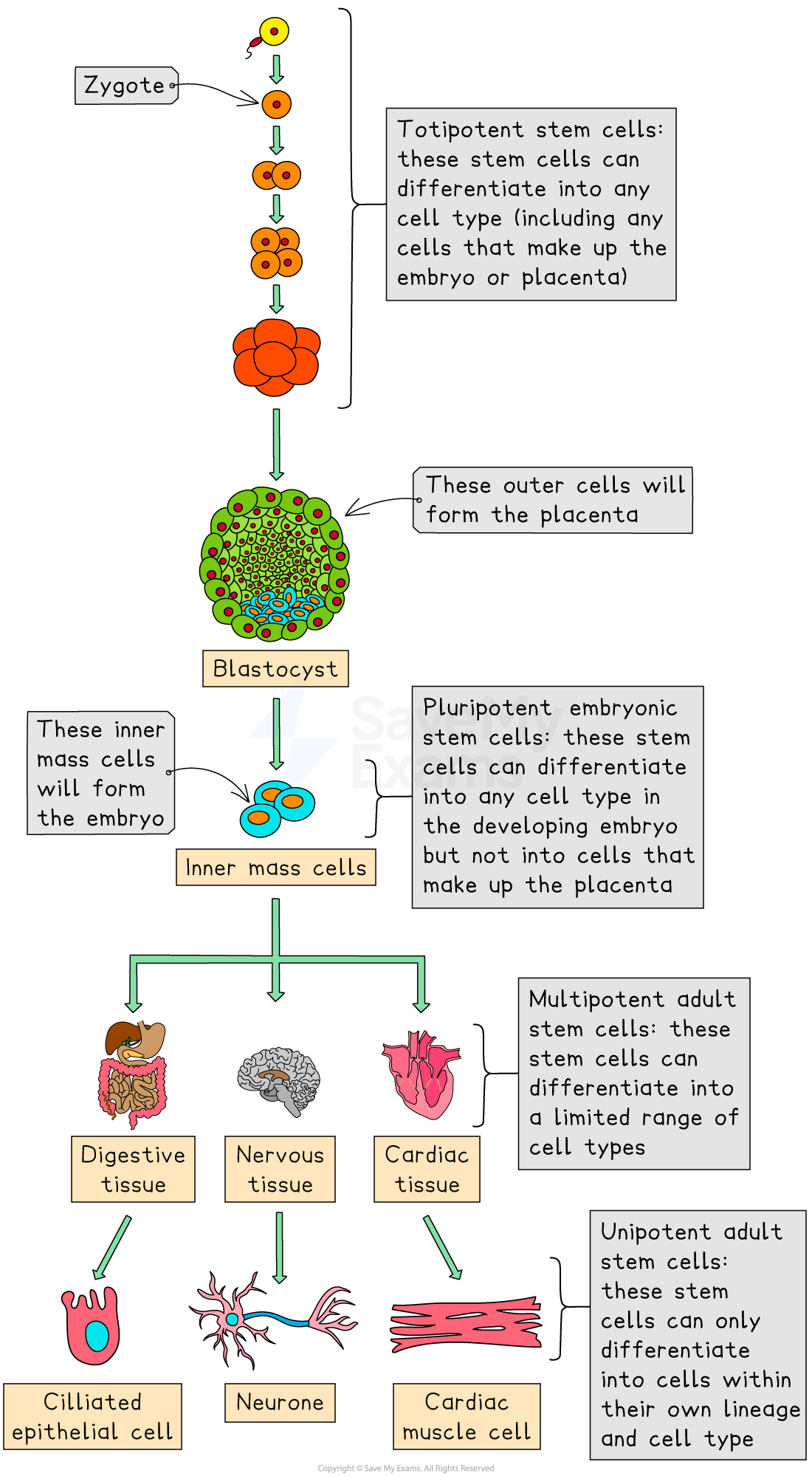Stem Cells (AQA A Level Biology): Revision Note
Exam code: 7402
Pluripotent & unipotent cells
Pluripotent stem cells
Pluripotent stem cells are embryonic stem cells that can differentiate into any cell type found in an embryo, but are not able to differentiate into extra-embryonic cells (the cells that make up the placenta)
Pluripotent stem cells can divide an unlimited number of times and keep replacing themselves
They can be used in treating human disorders
Induced pluripotent stem cells (iPS cells)
Induced pluripotent stem cells (iPS cells) are a type of artificially created stem cell
iPS cells can be produced from adult somatic cells using appropriate protein transcription factors
The transcription factors cause specific genes to be expressed, which genetically reprogram the cell to behave like embryonic stem cells
They are therefore capable of:
self-renewal (dividing indefinitely)
pluripotency (differentiating into any cell type in the body — muscle, nerve, skin, etc.)
They offer potential in research and therapy, as they mimic embryonic stem cells without the associated ethical concerns
Multipotent adult stem cells
As tissues, organs and organ systems develop, cells become more and more specialised
Cells must differentiate and specialise to fulfil particular roles
Multipotent stem cells are stem cells that can differentiate into a limited range of cell types, all within a specific tissue or organ system
In adults, multipotent stem cells can be found throughout the body (e.g. in the bone marrow, skin, gut, heart and brain)
Multipotent cells are important in tissue maintenance and repair, especially in adults
They are more specialised than pluripotent stem cells, but still retain the ability to self-renew
Research is being carried out on stem cell therapy, which is the introduction of adult stem cells into damaged tissue to treat diseases (e.g. leukemia) and injuries (e.g. skin burns)
Unipotent cells
Unipotent cells are adult cells that can only differentiate into their own lineage
They can differentiate into only one specific cell type, but still retain the ability to self-renew (make more of themselves)
Unipotent cells are found in specific organs or tissues.
Most cells in animal bodies are unipotent
An example of unipotent cells is in cardiomyocyte (heart muscle cell) formation:
Cardiomyocytes are the muscle cells responsible for the contraction of the heart
They function as unipotent cells, only becoming more cardiomyocytes
Cardiomyocyte-forming unipotent cells ensure the body has the muscle cells needed to keep it beating
Most cells in animal bodies are unipotent

Examiner Tips and Tricks
Make sure you learn the levels of potency of stem cells described above, and what range of cell types these stem cells can differentiate into.

Unlock more, it's free!
Did this page help you?